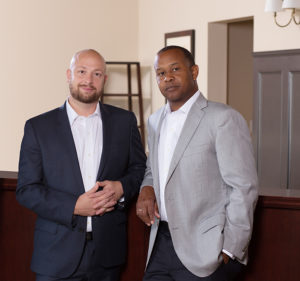 Product liability is an area of law which holds business entities responsible for the injuries caused by the products that they make available to the public. Product liability laws may apply to product manufacturers, suppliers, distributors, retailers, and other parties involved in product design, production and distribution. Product liability typically applies to tangible personal property. However, the term can have broader interpretations in law.
Product liability is an area of law which holds business entities responsible for the injuries caused by the products that they make available to the public. Product liability laws may apply to product manufacturers, suppliers, distributors, retailers, and other parties involved in product design, production and distribution. Product liability typically applies to tangible personal property. However, the term can have broader interpretations in law.
Product Liability Claims
Product liability laws primarily aim to protect consumers who have been harmed by defective products. U.S. product liability laws are typically determined and enforced on a state level. Therefore, specific laws and circumstances vary from state to state. In order to present a successful product liability claim, certain criteria must be met depending on several factors such as location, the type of claim, and the details surrounding each incident.
Types of Product Liability
There are three main types of product liability: manufacturing defects, design defects, and failure to warn. In most states, these product liability claims are made in terms of the three main theories of liability described above. For example, a personal liability case may claim strict liability for defective product design or negligent failure to warn.
Design Defects
Design defects describe products that are inherently dangerous or useless. Design defects typically apply to all products manufactured from a single design, such as a car of a specific year, make, and model. The manufacturing of the product does not necessarily play a role. This is because a design defect affects a product’s performance no matter how carefully or thoroughly the design may be implemented.
Examples of defective design include:
- A specific car model that tends to flip over during turns
- A type of gas can that tends to explode when being used to pour gas for a fire
- A model of guns with a defective fire control system, causing it to fire without pulling the trigger
Manufacturing Defects
Manufacturing defects occur during a product’s manufacturing process. These defects typically do not involve the design of the product. Manufacturing defects may be present when low-quality materials or poor workmanship occur during the product’s manufacturing.
Examples of manufacturing defects include:
- A tainted aspirin batch which contains a toxic substance
- A scooter that was manufactured and sold without brake pads
- A faulty seatbelt that fails to properly restrain a passenger during an accident
Failure to Warn
“Failure to warn” refers to the responsibility of product designers and manufacturers to give adequate warning of a product’s inherent and non-obvious dangers. This type of product liability may also be called a marketing defect. Failure to warn occurs when it is reasonably suspected that an injury or accident could have been avoided if the consumer was warned of the possibility of danger. In failure to warn claims, these dangers are present no matter how well the design and manufacturing process takes place.
Failure to warn case examples may include:
- A household chemical that becomes toxic when mixed with water or other reasonably safe substances, but does not contain this information in the safety warning
- A prescription medication that causes severe side effects which are not listed in the warning label
Orlando Product Liability Lawyers
Proving a product liability claim may be complex and difficult in some cases. The plaintiff, or party filing the product liability claim, must provide sufficient evidence that direct harm was caused by a design, manufacturing, or marketing defect of the defendant, or responsible party. For example, filing a product liability claim over a car that tends to flip over would not be successful if the car did not flip over during the accident in question.
In a product liability lawsuit, at least one of three main theories must typically be proven:
- Breach of warranty: In a breach of warranty claim, the plaintiff must prove that the defendant violated a warranty, or commercial statement concerning the product in question.
- Negligence: The plaintiff must prove that the defendant acted negligently by breaching a duty that was owed to the plaintiff. The defendant must also prove that the injury in question was a direct result of the defendant’s negligence.
- Strict liability: Strict liability holds the manufacturer responsible for defective products, even if the defects were not the result of negligence. However, the plaintiff must still prove that the manufacturer acted below the reasonable level of care expected within their industry.
Sources:
Fairgrieve, Duncan. Product Liability in Comparative Perspective. Cambridge, UK: Cambridge University Press, 2005. eBook Collection (EBSCOhost). Web. 12 Sept. 2013.
Jasper, Margaret C. What If the Product Doesn’t Work: Warranties and Guarantees. Dobbs Ferry, N.Y: Oceana Publications, 2003. Print.
Krauss, Clifford. “Two Sides of Product Liability.” New York Times 5 Oct. 2012: B1(L). Academic OneFile. Web. 12 Sept. 2013.
“Product Liability – USA.” International Law Office. Globe Business Publishing, 10 Feb 2005. Web. 12 Sep 2013. <http://www.internationallawoffice.com/newsletters/detail.aspx?r=9392>.
“Products Liability.” Legal Information Institute. Cornell University Law School, 19 Aug 2010. Web. 12 Sep 2013. <http://www.law.cornell.edu/wex/products_liability>.
Sherrow, Victoria. Product Liability. New York: Chelsea House, 2010. Print.
